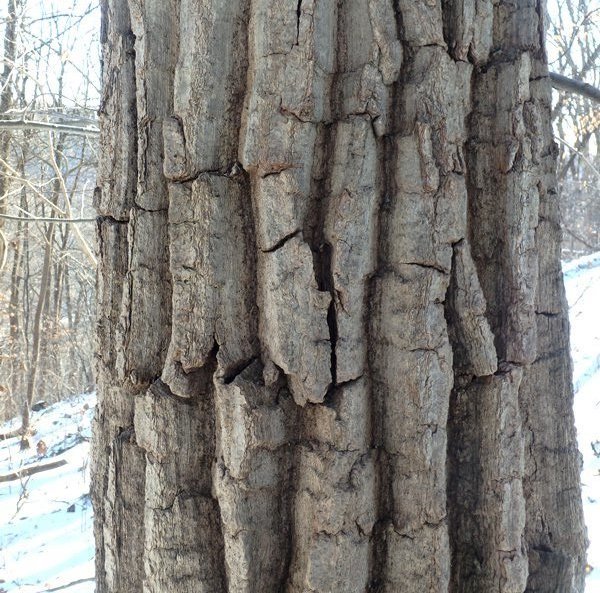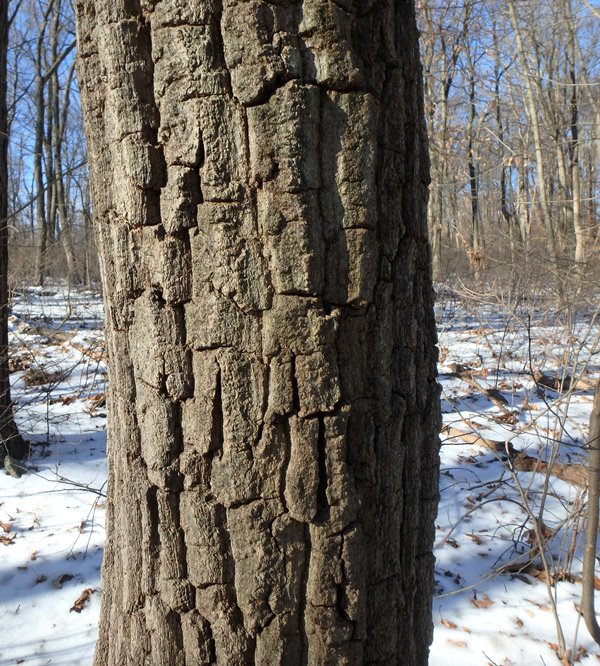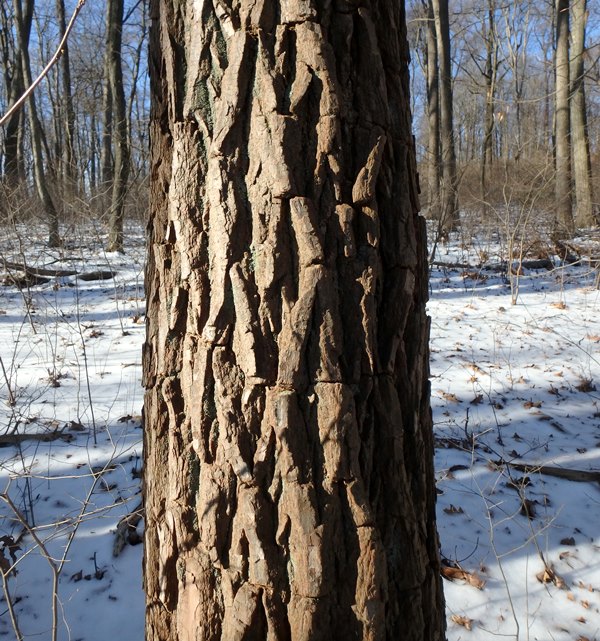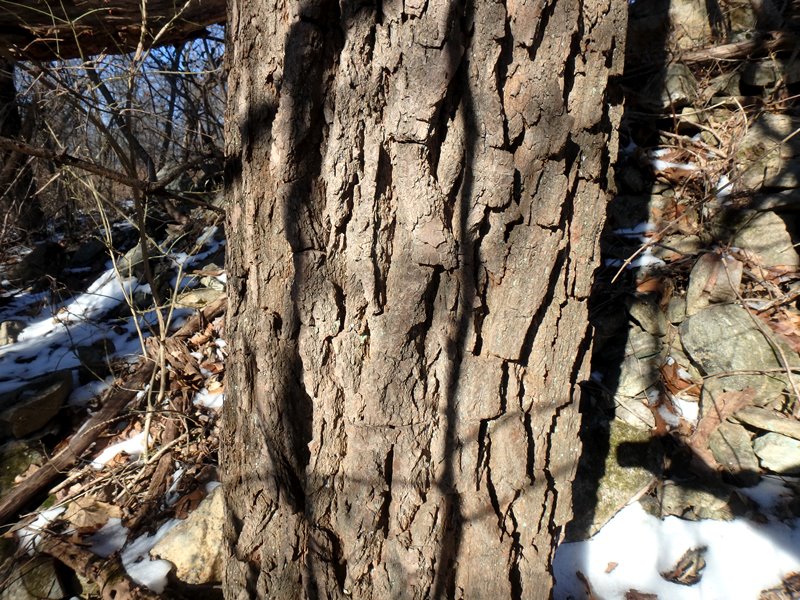Identifying Trees By Their Bark: Chunky Bark
January 26, 2020
OLYMPUS DIGITAL CAMERA
by Tim Burris, preserve manager.
First, let me say that there is a lot of variation in tree bark. Of course, there is variation between species, but within species there is also variety. Bark usually changes as a tree grows in both age and size. I have also seen geographical variations of the same species. Birders have a term, G.I.S.S. (General Information, Shape, and Size), that they talk about when identifying birds that they might have only glimpsed. It takes account for lots of hours in the field, observing, and picking up on clues that exceed the basic information in a field guide. Likewise, as I continue this series on tree bark, the photos may or may not help you learn to identify trees. That’s okay. (I use other clues, like habitat, silhouettes, branches and other tips to confirm my ID of a tree.) I hope you enjoy the photos. I try to take these photos at eye level and of similar sized trees for comparison.

#1

#2
Chunky Bark is one of the descriptors that my dendrology professor used. It is horribly ambiguous – until you start looking at trees. At Mariton, there are two chunky bark trees that can be confusing. Chestnut Oak (Quercus prinus) and Sassafras (Sassafras albidum) both have what I consider to be chunky bark. Sassafras has a little bit more of a pattern than the oak, but the hue of the bark is the tip off.

#3
#2 and #3 are trees of similar diameter, as are #1 and #4. You’ll notice that #3 and #4 have a little bit of orange, or reddish-brown highlights (Sassafras). #1 and #2 (Chestnut Oak) have a darker gray cast. Scroll back and forth between the photos and look for the orange versus gray, especially in the grooves of the bark.It is subtle in the photos, but more noticeable in the woods.#1 and #2 are Chestnut Oaks
#3 and #4 are Sassafras.

# 4 An older Sassafras tree.
next post
Tree Bark
January 22, 2020
by Tim Burris, Preserve Manager. Last winter I wrote a few Field Notes about different trees and their bark. I plan to continue that series […]
continue reading





